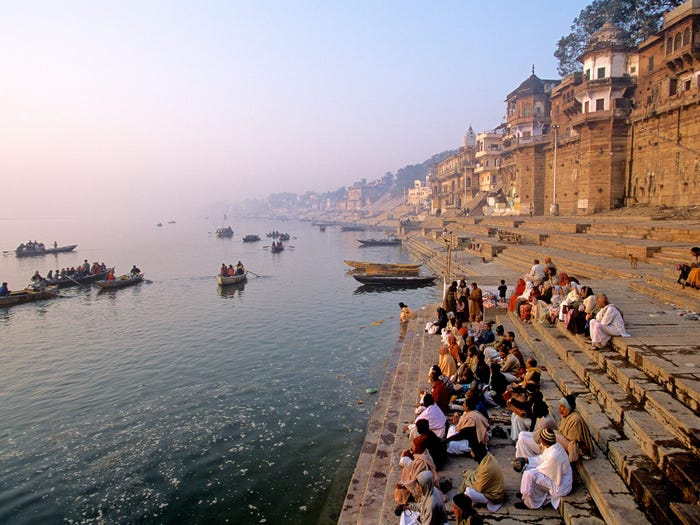Crossing Waters, Touching Eternity
When I became a Theravada Buddhist monk in Sri Lanka, I never imagined the journey that would unfold before me.
The call of ancient wisdom and the desire to walk in the footsteps of the Buddha led me to set out across the waters separating Sri Lanka from the vast subcontinent of India.
The boat rocked gently beneath me as I watched the horizon shift, my heart full of anticipation for the sacred lands ahead.
My first destination was the Bodhi tree in Bodh Gaya, a small town in the Indian state of Bihar.
This was no ordinary tree—it was under this very canopy that the Buddha attained enlightenment, breaking the chains of ignorance and suffering for all sentient beings.
The air around the tree hummed with a quiet power, as pilgrims from every corner of the world sat in silent meditation, seeking their own glimpses of awakening.
I joined them, feeling the weight of centuries of devotion settle around me.
The nearby monasteries echoed with the soft chanting of monks, and I found myself immersed in a timeless rhythm of prayer and contemplation.
But my journey was not over.
From Bodh Gaya, I traveled north to Varanasi, the legendary “City of Death.”
As I approached, the city rose like a mirage from the banks of the Ganges, its ancient spires and temples piercing the sky.
Varanasi is a place where the past is ever-present, a city of over a million souls and more than 3,600 temples, each a monument to faith and resilience.
The Ganges River is the lifeblood of Varanasi.
Hindus revere it as the goddess Ganga, whose waters have the power to purify, heal, and liberate.
The river is more than a body of water—it is a living entity, intimately connected to every aspect of life and death in the city.
At dawn, pilgrims descend the ghats, the stone steps that lead to the river, to bathe in its sacred waters.
They offer prayers, flowers, and flickering oil lamps, their faces radiant with hope and devotion.
Varanasi is famous as the place where Hindus come to die.
It is believed that dying here, and having one’s ashes immersed in the Ganges, grants moksha—liberation from the endless cycle of rebirth.
The city’s cremation ghats, especially Manikarnika, are always alive with activity.
Fires burn day and night, tended by the Doms, a community with the sacred duty of guiding souls to the afterlife.
The air is thick with the scent of sandalwood and smoke, and the sound of chanting priests mingles with the lapping of the river.
Everywhere I looked, life and death coexisted in a delicate balance.
Sadhus, holy men draped in saffron robes, meditated on the steps, their eyes closed in deep concentration.
Families gathered to perform last rites for their loved ones, their grief softened by the belief that their souls had found peace.
The city pulsed with energy, a living testament to the enduring power of faith.
As I walked the narrow, winding lanes of Varanasi, I felt the weight of history and the presence of the divine.
The city is a tapestry of stories—of pilgrims seeking salvation, of priests invoking ancient mantras, of children laughing by the riverbank.
The Ganges, ever-flowing, is both witness and participant, carrying the hopes and prayers of millions to the sea.
For me, Varanasi was a revelation.
It was a place where the boundaries between life and death blurred, where every moment was infused with meaning.
In this city of eternal return, I discovered a deeper understanding of impermanence and the enduring quest for liberation.
My journey had brought me to the heart of the sacred, and I would carry its lessons with me forever.






Comments
Post a Comment